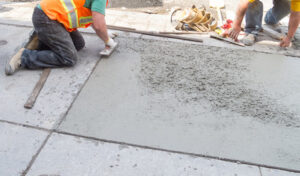The first step is to find a reliable cleaning service. Word-of-mouth, online forums, and service platforms are all good places to start your search.
Look for a local house cleaner near you with a strong portfolio and positive reviews. Then, check their availability to see if they can fit into your schedule. For professional help, contact House Cleaning Services Killeen.

1. Peace of Mind
Using House Cleaning Services takes the burden of keeping your home clean off of you and gives it to professionals. They are trained to focus on the task at hand and to work quickly and efficiently. This gives you more time to spend on the things that are most important in your life. You will feel more productive throughout the week, and your home will look as good as new when they are finished.
The peace of mind that comes with knowing your house is always kept clean and tidy is a huge stress reliever. This is especially true during a pandemic, when many people are worried about the spread of germs and bacteria in their homes. Professional cleaners use high-quality cleaning products and follow safety protocols to make sure that your home is clean and free of harmful substances.
When searching for a house cleaning service, start by asking friends and family for recommendations. Also, check online reviews and testimonials from previous customers. This will help you narrow down your search and find a company that is the right fit for your needs.
It is also important to find a company that values the customer. This means they will treat you with respect and provide you with high-quality service. You should also ask about their vetting process and how they interview and screen their employees. This will give you peace of mind knowing that you are working with a legitimate, reliable cleaning company and not some share-economy type service.
Finally, it is important to let the cleaners know how much you appreciate their hard work. This can be as simple as a thank you note or a phone call to say “good job” after every cleaning session.
2. More Time
If you’re constantly on the go with work and kids, then keeping your house clean may seem impossible. Often, cleaning services can save you the time it takes to keep your home tidy and free of pests. By enlisting a top-rated local cleaner, you’ll have more time to tackle other projects or just relax and catch up on rest.
Professional house cleaners can be hired on a weekly, bi-weekly, monthly, or seasonal basis. They can also be contacted to help prepare your home for a big event, like a graduation party or after hosting family for the holidays. Additionally, many cleaning companies offer additional specialized services such as deep or move-in/move-out cleanings.
While it’s important to maintain a clean and tidy home, it shouldn’t come at the expense of spending quality time with your family. Using all your free time on household chores can be exhausting, which can affect your mood and overall energy levels. By hiring a reliable cleaning service, you’ll be able to gift the time you would have spent on cleaning back to your family.
To make the most out of your time with your cleaning crew, you can prep your home before their arrival by putting away personal items and making sure all clutter is removed from tables and surfaces. This allows the cleaners to focus on the deeper, more thorough cleaning tasks rather than searching for a hidden nook or cranny that hasn’t been cleaned in a while. It also ensures that the clean up is consistent and complete every visit. If you have children, getting them involved in the preparation can also help teach them responsibility and instill a sense of pride in their work.
3. Better Health
In addition to the time-saving convenience, hiring professional cleaners offers a myriad of remarkable health benefits. These professionals are trained and seasoned in their field, armed with the knowledge, expertise, and products to clean your home thoroughly. From scrubbing floors to dusting surfaces and sanitizing bathrooms, they leave no corner unturned. The result is a spotless living space that’s healthier and safer for you and your family.
A clean environment can help reduce symptoms of allergies and respiratory issues caused by dust, pet dander, and mold. It can also minimize the spread of germs and illnesses, which is especially important during flu seasons or when a member of your household is sick. Professional cleaners know how to properly disinfect and use high-quality cleaning products to kill harmful bacteria and viruses.
Another great benefit of using House Cleaning Services is that it can help protect your home’s value. A dirty or unkempt home is less appealing to potential buyers and can depreciate your property’s value over time. Cleaning and maintenance services can keep your home in pristine condition, which will ultimately increase its value.
Keeping up with regular house cleaning can be challenging in today’s busy world. Fortunately, House Cleaning Services can make the task much easier by handling the heavy lifting for you. This frees you up to spend more time on your work, family, and other activities that are important to you. In addition, it can reduce your stress levels and help you feel better overall. Studies have shown that a cluttered environment can contribute to procrastination and feelings of overwhelm. However, a clean and organized living space can help you relax and feel more at ease.
4. Better Organization
Professional cleaners have the experience and skills to organize and declutter spaces to make them easier to keep clean. They can help you make the most of your space by maximizing storage, creating designated areas for certain items (like shoes or scarves), and implementing easy-to-use organizational tools. They can also teach you organization techniques so that you can maintain a clean space on your own.
If you have a busy schedule, using House Cleaning Services can help you stay on track with your responsibilities. You’ll have more time to manage errands, spend quality time with your family, and focus on work. Plus, you’ll have the peace of mind knowing your home is always tidy and ready for guests or parties.
While a regular cleaning service can handle most of your home or business, you may need a deep cleaning from time to time. This type of service can help eliminate the toughest to reach dirt, like cobwebs and dust on ceiling fans, as well as disinfect toilets, bathtubs, sinks, and doorknobs. During this time, your cleaner can also wipe down furniture and appliances, scrub cabinets, dust blinds and light fixtures, vacuum carpets and rugs, mop floors, and more.
You can prepare for these special cleaning services by clearing off counters, putting away clutter, and emptying trash. This will ensure that your cleaner can do their job without having to worry about personal belongings or cleaning supplies getting damaged. It is also a good idea to put away or secure any items that are dangerous or could cause harm if left out, such as uncapped insulin syringes and guns. You can also ask your cleaner if you need to take any extra precautions or steps to protect fragile or valuable items.
5. A Cleaner Home
Many people have made resolutions to get organized and clear out clutter this new year, but it can be hard to keep those goals when life gets in the way. Professional cleaning services can help you to stay on track with those goals by helping you with your regular house chores.
It can also be a great way to make your home more welcoming and inviting to guests. When people visit your home you want it to be in pristine condition and having a cleaning service take care of those tasks means that you can focus on the things that matter most.
When you’re looking for a company to hire, it’s important that you choose one that is legitimate and has good reviews. You’ll also want to make sure that they are insured in case something gets broken while they are working at your home. This is especially true if you have expensive items in your home like electronics, furniture or other items that may be damaged by the cleaners or their tools.
The good news is that most of these companies will be able to give you references from previous or current clients that can provide you with feedback about their experience with the cleaners. You can also ask about what services are included in their standard cleaning package and any additional services that they may offer.
It’s generally best to stay home while the cleaners are at your home so that you can meet them and introduce yourself, but it’s not always necessary. Most cleaners will let you know ahead of time if they prefer to work alone, and most cleaning companies will require that you provide them with a key or code so that they can access your home.







